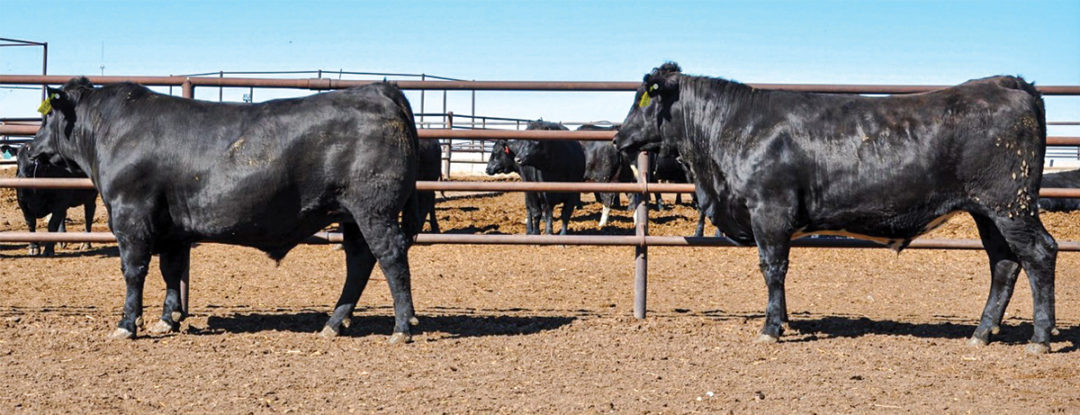Dairy-origin cattle comprise 15% to 20% of the approximately 25 million fed cattle harvested annually in the U.S. In recent years, crossbreeding beef sires to dairy cows, commonly termed beef-on-dairy, has greatly altered the type of dairy-origin cattle entering the U.S. beef supply chain. Beef-on-dairy crossbreds have largely replaced the once black-and-white landscape at many feedlots that historically fed Holsteins. In 2019, researchers at Texas Tech University began evaluating carcass and meat traits of beef-on-dairy crossbreds through a series of studies.
Firstly, different cattle types, including native beef cattle, beef-on-dairy crossbreds and dairy cattle (primarily Holstein), were compared for their influence on eating quality and product acceptance by consumers. The research set out to provide the only data available on the performance of beef from beef-on-dairy crossbreds in today’s production system, so producers and beef merchandisers could understand how considerable volumes of beef-on-dairy product might fit into the supply chain. Using data collected from sensory experts, everyday consumers and objective instruments, the influence of dairy breeding was found to positively influence tenderness. Strip loin steaks from dairy cattle were more tender than those from native beef cattle, while steaks from beef-on-dairy crossbreds performed as an intermediate. Even when marbling level was equal across cattle types, steaks from both dairy cattle and beef-on-dairy crossbreds had a more buttery, fat-like flavor than steaks from native beef cattle.
The study also demonstrated differences between cattle types in color stability of steaks displayed in a retail setting (Figure 1).

Color stability (expressed as percentage of surface area discoloration) of strip loin steaks displayed in a retail setting from different cattle types (SEM: standard error of the mean).
Steaks from dairy cattle reached 20% surface area discoloration (i.e., browning) – a level at which consumers begin to discriminate against purchasing – at 60 hours of retail display time, whereas steaks from native beef cattle and beef-on-dairy crossbreds reached the same level of discoloration at 84 hours. Metabolic processes at the cellular level, specifically muscle fiber type composition, were used to partially explain these differences between cattle types in tenderness, flavor and color. In addition, strip loin steaks from native beef cattle and beef-on-dairy crossbreds were much more similar in size and shape than steaks from dairy cattle, which are often discounted because of their angular and asymmetrical shape. Therefore, beef products from beef-on-dairy crossbreds can have an equal or better eating quality to those from native beef cattle and do not exhibit the same retail concerns of steak color and shape typically associated with beef products from dairy cattle.
After determining that cattle type influenced meat quality, researchers hypothesized that the large variability in beef versus dairy phenotype observed within the beef-on-dairy crossbred population might also contribute to meat quality differences (Photo 1).
 Divergent phenotypes (left: beef-type, right: dairy-type) of SimAngus × Holstein steers evaluated for carcass and meat quality traits. Courtesy photo.
Divergent phenotypes (left: beef-type, right: dairy-type) of SimAngus × Holstein steers evaluated for carcass and meat quality traits. Courtesy photo.
In the study, beef-on-dairy crossbreds were evaluated just before harvest by expert evaluators and segregated into different phenotype groups by conformation (i.e., muscling and frame size). Data illustrated that visual appearance in beef-on-dairy crossbreds, whether beef-type or dairy-type, had no influence on meat quality traits, including flavor, tenderness or color at retail display. Hence, selection for complementary beef genetics in the beef-on-dairy mating system that improve muscularity should not entirely negate the positive influence of dairy breeding on meat quality traits like tenderness and flavor. The study also revealed that, at a constant live weight, ribeye area was not different between phenotype groups and, thus, did not sufficiently characterize muscling differences. This result suggested that emphasis on ribeye area (or ribeye area per unit weight) alone is not likely the most effective method of overcoming muscling challenges inherent to dairy-influenced cattle (Figure 2).
 After adjustment to a constant live weight, ribeye area shares a relatively poor relationship with live muscling score, which was determined by three expert evaluators on a 1 to 9 point scale.
After adjustment to a constant live weight, ribeye area shares a relatively poor relationship with live muscling score, which was determined by three expert evaluators on a 1 to 9 point scale.
Separately, a carcass yield test was conducted in a commercial beef processing facility at normal processing speeds to provide the most recent account of carcass cutout value differences between cattle types, including native beef cattle, beef-on-dairy crossbreds and dairy cattle (Holsteins). Because of differences in maturing rate between cattle types, carcasses were selected at a harvest endpoint for backfat thickness representative for their cattle type (native beef: 0.54 inch; beef-on-dairy cross: 0.42 inch; dairy: 0.33 inch). The study demonstrated that, on average, beef-on-dairy crossbreds produced similar red meat yields and cutout values to native beef cattle, albeit there were trade-offs between the two cattle types, with less fat from beef-on-dairy crossbreds and less bone from native beef cattle. Holstein carcasses markedly produced the least red meat yield and the greatest amount of bone. Beef-on-dairy crossbreds within each harvest lot were also segregated into high-yielding and low-yielding groups. Increased muscling in the hindquarter (i.e., round and loin) most greatly differentiated carcass cutout value (by up to $10 per hundredweight) between high- and low-yielding beef-on-dairy crossbreds. This study suggested that, to optimize their potential for red meat yield, beef-on-dairy crossbreds should be harvested at a backfat thickness lesser than native beef cattle and produced using genetics with considerable emphasis on hindquarter muscularity.
As beef-on-dairy crossbreeding becomes a mainstay practice in the U.S. dairy industry, the consistent supply and inherent traceability of beef products from beef-on-dairy crossbreds have opened marketing opportunities many have started to explore. Even so, beef-on-dairy crossbreds still present challenges in the supply chain, and it will be important for beef and dairy producers to work together so both can realize premiums from the crossbreeding practice.
Liver abscesses and their associated impact on trimming of highly valued outside skirt meat remain one of biggest challenges among the beef-on-dairy crossbred population because liver abscess prevalence is routinely reported in more than 50% of cattle within harvest lots.
While much emphasis has been given to strategic beef sire selection for the beef-on-dairy crossbreeding system, next steps might include an evaluation of the types of dairy cows to which certain beef bulls are mated to maximize profit potential in the resulting calf. Regardless of how beef-on-dairy crossbreeding continues to evolve, the practice has seemingly positive implications on eating quality, meat color stability and carcass yield in the beef supply chain, especially in comparison to producing an often-considered byproduct of the dairy industry – the Holstein steer.






